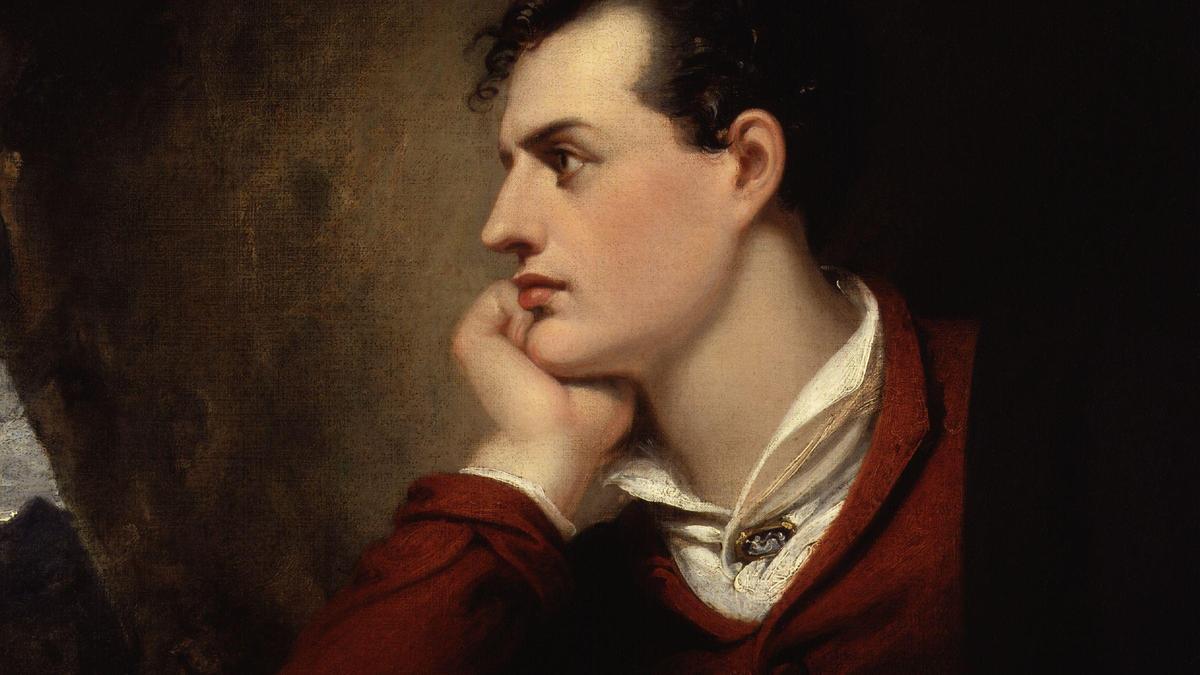
The intriguing life of Lord Byron: Poet, Rebel, and Icon
The Hindu
As an individual of influence, blessed with a larger-than-life personality Lord Byron captured the imagination of many who crossed his path. Beyond his literary genius, his life was filled with intriguing stories that are often overlooked—like keeping a pet bear at university and possibly inspiring the first vampire in English literature. Dive in to uncover the fascinating facets of this enigmatic figure.
Often dubbed as one of the first modern celebrities, Lord Byron was a leading figures of the Romantic movement, a literary and cultural movement that arose in the late 18th Century. Romanticism emphasised human imagination and the awe-inspiring power of nature, serving as a counter to the rapidly industrialising world. This movement, sparked by the French Revolution, reshaped literature by focusing on personal expression and the beauty of the natural world. Byron’s works, such as Childe Harold’s Pilgrimage and Don Juan, exemplify the ideals associated with this movement.
However, beyond his literary genius, there are many intriguing facets of Lord Byron’s life that are lesser known. Let’s delve deeper into the life of this enigmatic poet and uncover the man behind the myth.
Born George Gordon Byron on January 22, 1788, in London, Byron’s early life was marked by turbulence and hardship. Both of his parents came from affluent backgrounds, but his father, Captain John (“Mad Jack”) Byron, squandered much of the family fortune. Following his father’s death when Byron was just three, he was raised by his Scottish mother, Catherine Gordon, in Aberdeen. Despite their aristocratic lineage, they lived in relative poverty. Byron inherited the title of ‘Baron Byron of Rochdale’ at the age of 10 after the death of his great-uncle. This title brought substantial debts, adding a heavy burden to his young shoulders. He had to sell Newstead Abbey the ancestral home he inherited with the title to become debt-free.
Byron led a colourful and adventurous life, full of travels and exciting stories. He was famous for his poetry and had a bit of a scandalous reputation because he loved breaking the rules. Despite his wild ways, he was a brilliant writer who inspired many. He passed away in April 1824 at Missolonghi, in present day Greece.
Byron also had a club foot, a physical disability that made him acutely self-conscious throughout his life. This, combined with his noble yet troubled upbringing, shaped much of his character and influenced his literary voice.
Byron was sent to school in London and also studied at Trinity College, Cambridge. The poet’s university days at Cambridge were marked by his notorious rebellious streak. The university’s strict regulations often clashed with his free spirit. One memorable incident involved a rule that prohibited dogs in student quarters. Byron, never one to follow the beaten path, responded by bringing a tamed bear to live with him instead. This act of defiance not only shocked the university but also underscored his disdain for arbitrary rules. According to historian Dr Corin Throsby, Byron had rescued the bear from a circus, showcasing his penchant for challenging societal norms in the most dramatic ways.
Byron’s love for animals extended well beyond his university days. His home was a veritable zoo, filled with a variety of creatures. Percy Bysshe Shelley, a close friend and fellow poet, described Byron’s Italian villa as housing “ten horses, eight enormous dogs, three monkeys, five cats, an eagle, a crow, and a falcon.” Shelley even noted encountering “five peacocks, two guinea hens, and an Egyptian crane” on the grand staircase. This eclectic collection of animals reflected Byron’s eccentric and compassionate nature.













